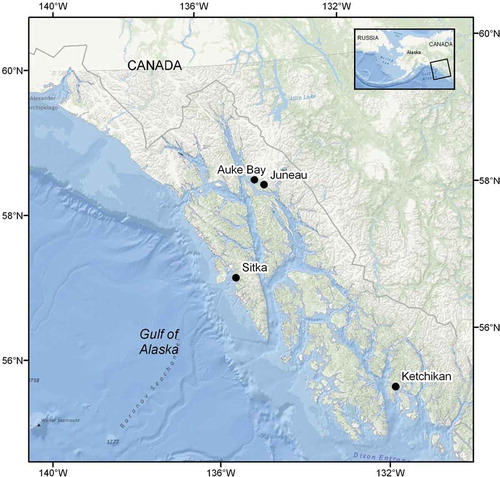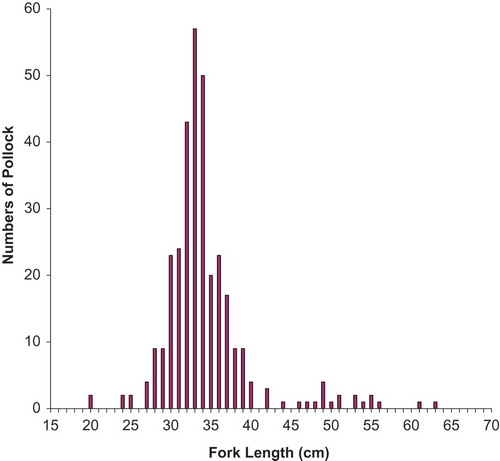Figures & data
Figure 1. Study location in Southeast Alaska, where the feasibility of applying external tags to Walleye Pollock was evaluated.

Figure 2. Length frequency distribution of Walleye Pollock that were used in the tagging feasibility study.

Table 1. Survival of Walleye Pollock that received lock-on tags or T-bar anchor tags and that were transferred between tanks via dipnetting or by use of wet, bare hands (non-dipnetting).
Table 2. Observed mortality (Nmort) of tagged Walleye Pollock in the holding tank according to handling technique (transfer between tanks via dipnetting or by use of wet, bare hands [non-dipnetting]) and tag type (lock-on tag or T-bar anchor tag). All of the anchor-tagged fish were transferred by non-dipnetting. The total number of fish in each group is given in .
Table 3. Days in captivity until death and number of dead Walleye Pollock for each category of mortality. Fish were transferred between tanks via dipnetting or by use of wet, bare hands (non-dipnetting).
Table 4. Number (percentage in parentheses) of surviving Walleye Pollock that were assigned to each tag infection category at the time of release (1 = no infection; 2 = the flesh was off-color, but there was no open wound; 3 = the flesh was infected, and the wound around the tag site was less than 5 mm in diameter; 4 = the flesh was infected, and the wound around the tag site was greater than 5 mm in diameter). Fish received lock-on tags or T-bar anchor tags and were transferred between tanks via dipnetting or by use of wet, bare hands (non-dipnetting). All of the anchor-tagged fish were transferred by non-dipnetting.
